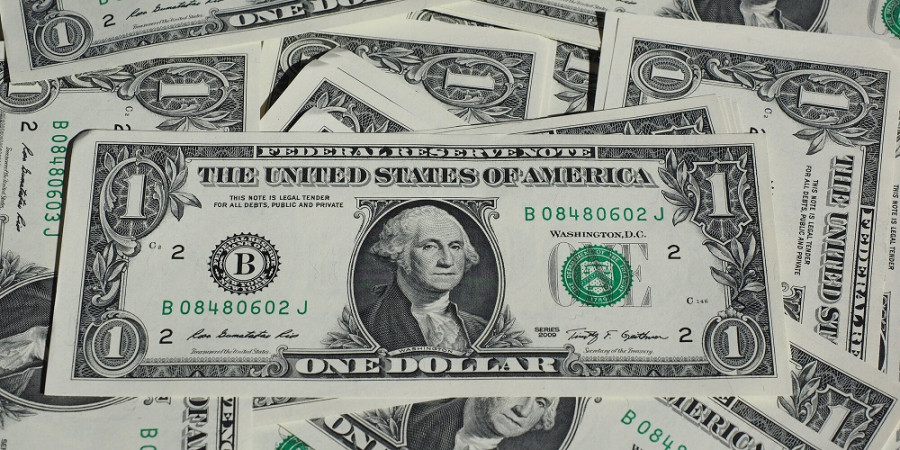During the Asian session on Friday, the euro/dollar pair sharply fell to the 1.0600 area, coming under pressure from reports that Israel had carried out strikes against Iran. The dollar regained strength amid risk-off sentiments but not for long.
However, it became clear that World War III was once again postponed: the parties moderately commented on the overnight events. For instance, the Israeli military stated they had no comments at that time. Iran also refuted the sensational media reports that claimed the IDF had struck the country's nuclear facilities. The Islamic Revolutionary Guard Corps stated that the loud sounds in Isfahan were related to the shooting of air defense systems at a suspicious object. It is unclear what these objects were and who was behind them. The IAEA in turn stated that Iran's nuclear facilities were not attacked. State Iranian media also claimed that the country's cities were not hit by any foreign state. Most American media admitted that an attack did indeed occur and was carried out by Israel, but also acknowledged that the response was very limited in nature. According to Reuters, an immediate Iranian response will not follow, as "it is currently unclear who was behind the attack."

For now, the situation is not unfolding according to the worst-case scenario. Both sides are showing restraint and not aiming for further escalation. Therefore, risk-off sentiments in the markets sharply weakened. The dollar slid and EUR/USD sellers failed to test the 1.0500 area.
In other words, we witnessed a sort of "storm in a teacup": the dollar showcased a short-lived steep rally but failed to cement its gains.
The macroeconomic calendar is bereft of any important news releases. The reports released this week are mostly of secondary importance, and Federal Reserve officials are merely confirming the already-played fact that the central bank will not cut interest rates at the June meeting.
Yesterday, Federal Reserve Bank of New York President John Williams – one of the most influential Fed officials – said that there's no rush to lower interest rates as the benchmark interest rate is in a "good place," moving inflation down gradually. Moreover, when asked about the prospects for a rate hike, he said he would never say never.
Jerome Powell voiced a similar position (though he did not discuss a rate hike). According to him, the latest macroeconomic reports show no progress in combating inflation. Therefore, it will take "longer than expected" to achieve the confidence needed to get inflation down to the central bank's 2% target.
Atlanta Fed President Raphael Bostic, who had anticipated only one rate cut this year before the release of inflation data, said yesterday that central bankers would need to consider an interest-rate hike if inflation does not continue to move toward the Fed's 2% goal.
Meanwhile, ECB representatives continue to signal a rate cut at the June meeting. Christine Lagarde stated that the regulator will cut rates in June, provided there are no "surprises." Her position was almost verbatim echoed by ECB Vice-President Francois Villeroy and Robert Holzmann, the head of Austria's central bank.
Regarding macroeconomic reports, the situation also favors EUR/USD sellers. For instance, the weekly figure for initial unemployment claims remains at a relatively low level (212,000), reflecting a tight labor market, while US industrial production rose by 0.4% (marking positive dynamics for the second consecutive month), and the Philadelphia Fed's manufacturing activity index (covering Pennsylvania, New Jersey, and Delaware) unexpectedly jumped in April to a two-year high of 15.5 points, against a modest growth forecast of just 1.4.
Such statistics have dampened the market's dovish expectations. According to the CME FedWatch Tool, the probability of a rate cut in June is now only 18%. However, market participants have already priced in this fundamental factor (which is why the EUR/USD pair fell to the 1.0600 area).
To extend losses, the pair needs another driving force in the form of any news report. The prospects for a Fed rate hike (as well as maintaining the status quo throughout 2024) seem vague. Therefore, the pair is likely to drift around the 1.0600 mark in the medium term.
At the same time, it must be acknowledged that these fundamental factors do not facilitate a sustainable rise in the EUR/USD pair. The Fed is voicing moderately hawkish signals, while the European Central Bank continues to assure the markets that it is ready to lower interest rates early in the summer. In such circumstances, it makes sense to consider short positions when corrective surges wane.
From a technical perspective, according to the D1 chart, the EUR/USD pair continues to trade between the middle and lower lines of the Bollinger Bands indicator, as well as below all lines of the Ichimoku indicator, which demonstrates a bearish "Parade of Lines" signal. The support level is at 1.0600, corresponding to the lower line of the Bollinger Bands on the daily chart.











